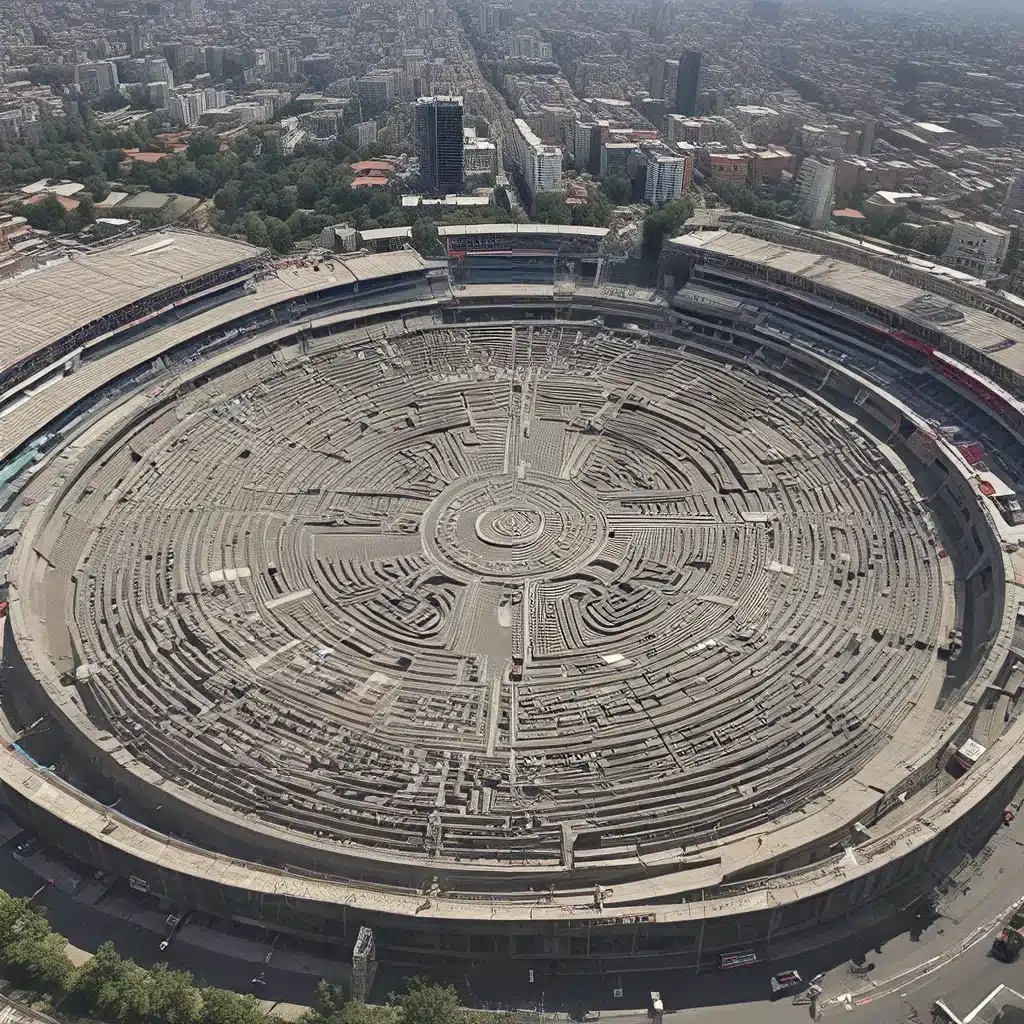
The Estadio Azteca in Mexico City, Mexico, is a colossal football stadium that has captivated sports enthusiasts and architectural admirers alike. As the largest stadium in Mexico and one of the largest in the world, the Azteca stands as an iconic landmark, a testament to the country’s rich sporting heritage and engineering prowess.
A Storied Past
Constructed in the 1960s, the Estadio Azteca was envisioned as a grand stage for the 1968 Summer Olympics. Designed by renowned Mexican architect Pedro Ramírez Vázquez, the stadium’s design drew inspiration from the country’s Aztec and colonial past, blending modern engineering with pre-Hispanic architectural elements. The result was a truly breathtaking structure that would go on to host some of the most significant sporting events in the history of Mexico.
The Azteca’s debut came during the 1968 Olympics, where it served as the venue for the opening and closing ceremonies, as well as several football matches. The stadium’s capacity of over 100,000 spectators ensured that the world’s eyes were firmly fixed on Mexico City during those momentous games.
A World Cup Showcase
The Estadio Azteca’s crowning achievement, however, came in 1970 and 1986, when it hosted the FIFA World Cup. As the only stadium to have hosted the prestigious tournament twice, the Azteca has etched its name in the annals of football history.
The 1970 World Cup witnessed the legendary Pelé leading Brazil to their third World Cup title, cementing his status as one of the greatest players of all time. The 1986 tournament, on the other hand, is remembered for the “Hand of God” goal scored by Diego Maradona in the quarterfinal match against England, a moment that remains a subject of enduring controversy and fascination.
The Azteca’s hosting of these World Cup events solidified its reputation as a cauldron of football passion, where the dreams of champions and the heartbreaks of underdogs have played out on the hallowed turf.
Architectural Marvels
The Estadio Azteca is not merely a sports venue; it is a architectural marvel that seamlessly blends the old and the new. The stadium’s design features a striking combination of bold, modern lines and pre-Hispanic influences, creating a unique aesthetic that sets it apart from other football stadiums around the world.
One of the most distinctive features of the Azteca is its iconic twin-tower design, which evokes the pyramids of the ancient Aztec civilization. These towers, standing 63 meters tall, serve as the stadium’s main entrances and provide a dramatic backdrop for the action on the pitch.
The stadium’s interior is equally impressive, with a seating capacity that can accommodate over 87,000 fans. The steep and imposing stands create an intimidating atmosphere for visiting teams, while the stadium’s acoustics amplify the roar of the passionate supporters.
Sustainable Transformation
In recent years, the Estadio Azteca has undergone a remarkable transformation, embracing the principles of sustainability and environmental stewardship. The stadium’s management has implemented a series of eco-friendly initiatives, including the installation of solar panels, water recycling systems, and energy-efficient lighting.
These efforts have not only reduced the Azteca’s carbon footprint but have also set an example for other sports venues around the world. The stadium’s commitment to sustainability has earned it recognition as a leader in the field of green stadium design and operations.
A Cultural Icon
Beyond its sporting significance, the Estadio Azteca has become a cultural icon in Mexico, serving as a source of national pride and identity. The stadium’s distinctive architecture and rich history have made it a beloved landmark, attracting visitors from around the world who come to experience the electric atmosphere and soak in the vibrant energy of the venue.
The Azteca’s impact extends far beyond the realm of football; it has become a hub for cultural events, concerts, and community gatherings, cementing its status as a multifunctional destination that celebrates the diverse tapestry of Mexican culture.
Conclusion
The Estadio Azteca is a true marvel, a stadium that has transcended its role as a mere sports venue to become a cultural and architectural icon. Its rich history, engineering feats, and commitment to sustainability make it a must-visit destination for anyone exploring the vibrant city of Mexico City.
As you step through the iconic twin towers and into the cavernous interior of the Azteca, you’ll be transported to a world where the echoes of past triumphs and the promise of future glory converge, creating an unforgettable experience that captures the essence of Mexico’s enduring passion for the beautiful game. Explore the Old Stadium Journey to uncover more captivating stories from the world’s most remarkable sports venues.

